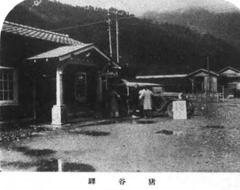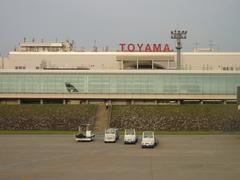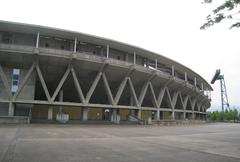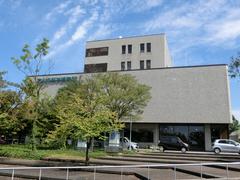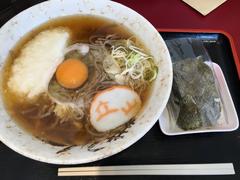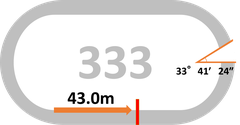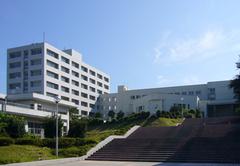Toyama Municipal Folkcraft Village: Visiting Hours, Tickets, and Comprehensive Travel Guide
Date: 04/07/2025
Introduction
Nestled on the forested slopes of Mount Kureha on the outskirts of Toyama City, the Toyama Municipal Folkcraft Village (富山市民俗民芸村) invites visitors to immerse themselves in the rich tapestry of Toyama Prefecture’s cultural heritage. This open-air museum cluster preserves and showcases traditional crafts, architectural marvels, and folk traditions from the Edo and Meiji eras, offering a vivid window into rural Japanese life. With its authentic relocated buildings, interactive workshops, and tranquil natural setting, the village is an essential destination for history buffs, cultural enthusiasts, and families seeking an educational yet relaxing experience (Japan Guide, Toyama City Official Tourism, MATCHA).
This detailed guide provides everything you need to plan your visit, including up-to-date information on visiting hours, tickets, accessibility, travel tips, and the village’s unique attractions. It also highlights nearby sites, seasonal events, and practical advice to help you make the most of your time in Toyama.
Table of Contents
- Introduction
- Historical Background and Purpose
- Key Attractions and Architectural Highlights
- Visiting Hours and Ticket Information
- Accessibility and Facilities
- Getting There: Transportation and Directions
- Visitor Experience and Activities
- Practical Tips for Your Visit
- Seasonal Events and Special Exhibitions
- Nearby Attractions
- Frequently Asked Questions (FAQ)
- Conclusion
- References
Historical Background and Purpose
Established in 1965, the Toyama Municipal Folkcraft Village was created in response to increasing modernization, with the goal of preserving the region’s tangible and intangible heritage. The village consists of a collection of authentic buildings—farmhouses, artisan workshops, and warehouses—relocated from across the prefecture. Each structure is carefully restored and filled with artifacts that reflect the daily lives, trades, and artistry of Toyama’s communities during the Edo (1603–1867) and Meiji (1868–1912) periods (Japan Travel).
The location’s historical significance is heightened by Toyama’s past as a crossroads for trade and craftsmanship, particularly noted for its medicine peddling, ceramics, papermaking, and metalwork industries. The village’s mission is to foster appreciation for these traditions while engaging new generations through education and hands-on experiences.
Key Attractions and Architectural Highlights
Gassho-zukuri Farmhouses
Two impressive gassho-zukuri farmhouses, with steep thatched roofs to withstand heavy snow, provide an authentic look at rural life. These buildings, similar in design to those in Gokayama and Shirakawa-go, feature traditional interiors with hearths, tatami rooms, and displays of farming implements.
Folk Craft Museum
This core facility displays an extensive collection of folk crafts, including ceramics, textiles, lacquerware, metalwork, glass art, and folk paintings. The exhibits trace the evolution of local crafts and their role in daily life (Japan Experience).
Museum of Medicine Peddlers
Toyama’s famed role as a hub for medicine sellers is brought to life through exhibits of pharmaceutical tools, packaging, and promotional materials, some designated as national cultural properties.
Museum of Ceramic Art
Located in a late Meiji-era building, the museum highlights Toyama’s ceramic artistry with both historical and contemporary pieces.
Archaeological Museum
Artifacts from Toyama’s prehistoric and feudal periods—including Jomon pottery and Kofun burial goods—are showcased here.
Toyama Clay Doll Studio
Experience live demonstrations and participate in hands-on workshops to paint traditional clay dolls, a regional folk art (MokiToki Travels).
Enzan-an Tea Ceremony House
Set beside a tranquil pond, Enzan-an offers visitors the chance to participate in authentic tea ceremonies, enjoying matcha and seasonal sweets in a serene environment (MATCHA).
Takamura Gyujin Memorial Art Museum
This gallery honors local ink painter Takamura Gyujin, displaying his evocative sumi-e works.
Chokeiji Temple and the 500 Rakan Statues
Adjacent to the village, the historic Chokeiji Temple (founded 1786) features a hillside adorned with 500 unique Buddhist disciple statues, an iconic spiritual and cultural site (Japan Guide).
Visiting Hours and Ticket Information
-
Hours: Open daily, 9:00 AM – 5:00 PM (last admission 4:30 PM).
Closed: Wednesdays (or next day if Wednesday is a national holiday), and December 29 – January 3. -
Admission:
- Single museum: 100 yen
- All-museum pass: 530 yen
- Children under junior high: Free
- Group discounts available (for 20+ people)
(MATCHA)
-
Workshops and Tea Ceremony:
- Additional fees may apply for hands-on experiences; inquire or check the official website.
Accessibility and Facilities
- Pathways: Most of the site features paved, gently sloped paths suitable for strollers and wheelchairs. Some historical buildings may have steps or narrow entrances.
- Wheelchair Access: Wheelchairs are available on request.
- Restrooms: Clean, accessible toilets are provided throughout the grounds.
- Parking: Free on-site parking for cars and buses.
- Gift Shop: Local crafts, souvenirs, and folk art available for purchase.
- Refreshments: Vending machines and a tea house (Maruyama-an) offer drinks and light snacks; no full-service restaurant on site.
Getting There: Transportation and Directions
- By Bus:
Take the “Gurutto Bus” Northwest Route from Toyama Station and get off at “Minzoku Mingei Mura.” The stop is directly adjacent to the entrance (MATCHA). - By Train and Bus:
From Toyama Station, take the Toyama Chihō Railway tram to Minami-Toyama Station, then transfer to a local bus bound for the village. - By Car/Taxi:
Address: 1118-1 Anyobo, Toyama City, Toyama Prefecture - On Foot/Bike:
The site is accessible via walking and cycling trails from central Toyama.
Visitor Experience and Activities
- Workshops: Join hands-on sessions in papermaking, weaving, woodcarving, or clay doll painting.
- Tea Ceremony: Experience traditional Japanese hospitality at Maruyama-an.
- Self-Guided Exploration: Bilingual signage and maps guide visitors between attractions.
- Photography: Capture the beauty of gassho-zukuri architecture, seasonal gardens, and artisan demonstrations. Note that some indoor exhibits may restrict flash or tripods.
- Special Events: The village hosts seasonal festivals, craft fairs, and special exhibitions throughout the year (Toyama City Official Tourism).
Practical Tips for Your Visit
- Recommended Time: Allow 2–3 hours for a thorough visit. Add more time for workshops or tea ceremonies.
- Weather: The complex is mainly outdoors; dress appropriately and bring sun/rain protection.
- Language: Most signage is bilingual. Staff may have limited English, but translation apps and printed guides are helpful.
- Etiquette: Respect quiet zones, especially in the tea house and art galleries. Do not touch artifacts unless permitted.
- Souvenirs: The gift shop is ideal for purchasing authentic, locally made crafts.
Seasonal Events and Special Exhibitions
Check the official website for information about:
- Folkcraft festivals
- Artisan demonstrations
- Rotating exhibitions
- Children’s cultural workshops
Nearby Attractions
Enhance your visit by exploring:
- Chokeiji Temple: Famous for its 500 rakan statues.
- Toyama Glass Art Museum: Modern glass installations in a striking building.
- Toyama Castle Park: Historic site with beautiful gardens.
- Matsukawa Park: Scenic riverside walking paths.
- Tateyama Kurobe Alpine Route: Ideal for nature excursions (MATCHA).
Frequently Asked Questions (FAQ)
What are the Toyama Municipal Folkcraft Village visiting hours?
Open 9:00 AM to 5:00 PM (last admission 4:30 PM); closed Wednesdays and during New Year holidays.
How much are the Toyama Municipal Folkcraft Village tickets?
100 yen per museum, or 530 yen for an all-facility pass.
Is the Folkcraft Village wheelchair accessible?
Most pathways and major buildings are accessible; some traditional structures may have limited access.
Are guided tours available?
English-language guided tours are available by advance reservation for groups; self-guided exploration is supported by bilingual signage.
Can I participate in workshops or tea ceremonies?
Yes, workshops and tea ceremonies are available for a modest additional fee. Check schedules or reserve in advance.
How do I get there from Toyama Station?
Take the “Gurutto Bus” Northwest Route and alight at “Minzoku Mingei Mura,” or use local taxis.
Conclusion
The Toyama Municipal Folkcraft Village is a vibrant, living repository of Toyama’s folk traditions and craftsmanship. Its harmonious blend of authentic architecture, artisan workshops, and peaceful natural setting makes it a must-visit for anyone interested in Japanese heritage. With accessible facilities, affordable tickets, and engaging activities, the village offers a rewarding journey into the heart of regional culture. Plan your visit today, and enrich your understanding of Toyama’s enduring legacy.
References
- Japan Guide: Toyama Municipal Folkcraft Village
- Toyama City Official Tourism: Folkcraft Village
- Toyama Municipal Folkcraft Village Official
- MATCHA: Toyama Folkcraft Village Guide
- Japan Travel: Historic Exploration
- Visit Toyama Japan
- MokiToki Travels: Toyama Folkcraft Village
